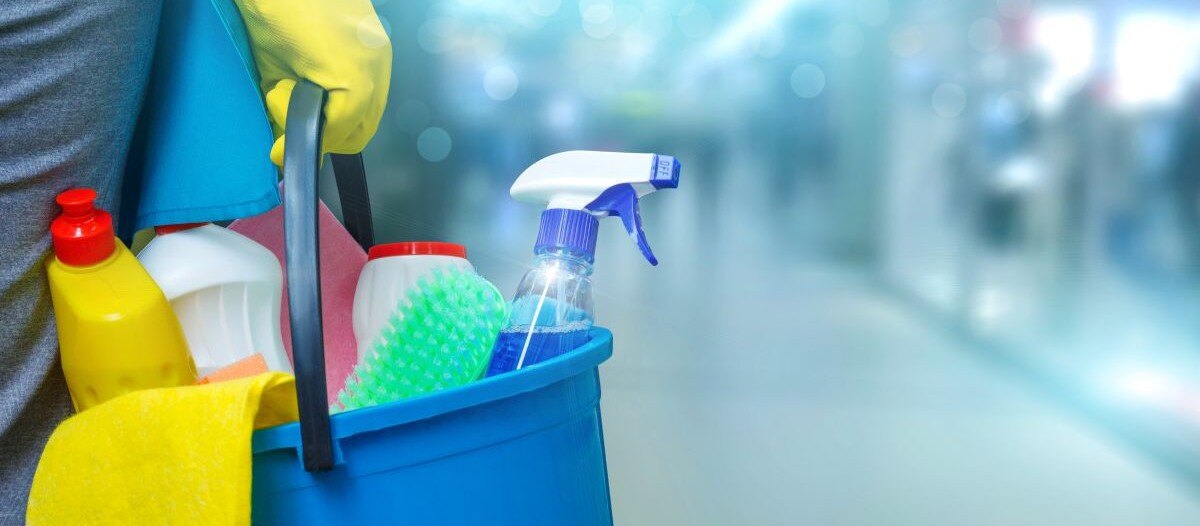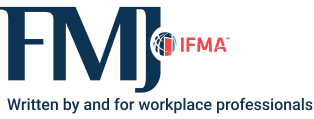The Hidden Dangers of Everyday Cleaning Products
Their impact employee health & workplace safety

Cleaning is a fundamental aspect of maintaining a safe and healthy workplace. From wiping down desks to disinfecting bathrooms, the regular use of cleaning products is essential to ensuring a hygienic environment. However, many commonly used cleaning supplies contain hidden dangers that can negatively affect employee health and workplace safety. Harmful chemicals in these products can contribute to a range of health problems, ultimately leading to increased sick days, higher health care costs and reduced productivity. Understanding these dangers and exploring safer alternatives is crucial for businesses looking to protect employee well-being and reduce long-term costs.
Analyzing the harmful chemicals found in commonly used cleaning supplies
Cleaning products are designed to remove dirt, bacteria and other contaminants from surfaces, but many of them achieve this through the use of potent chemicals that can pose serious health risks. Some of the most common harmful chemicals found in cleaning supplies include widely recognized substances, like bleach, as well as more obscure, but equally pervasive ingredients.
One of the most prevalent are volatile organic compounds (VOCs): gasses emitted by certain solids or liquids, including many cleaning products. VOCs can be found in products such as air fresheners, glass cleaners and disinfectants. Exposure to VOCs can cause a range of health problems, from eye, nose and throat irritation to headaches, dizziness, even damage to the liver, kidney or central nervous system. Long-term exposure has been linked to chronic respiratory issues, allergic reactions, and an increased risk of cancer.
A potent irritant found in many glass and window cleaners, ammonia can cause immediate irritation to the skin, eyes, throat and respiratory tract. Prolonged exposure, especially in poorly ventilated areas, can exacerbate asthma symptoms and lead to chronic bronchitis. It is particularly hazardous to those with preexisting respiratory conditions.
Chlorine bleach, commonly used in disinfectants and laundry products, can release harmful chlorine gas when mixed with other chemicals like ammonia. Inhalation of chlorine gas can cause severe respiratory distress, coughing and lung damage. Even at lower concentrations, bleach is a known irritant that can cause skin burns, eye irritation and respiratory problems.
Often used as disinfectants in surface cleaners, quaternary ammonium compounds (QACs or Quats) have been associated with skin and respiratory irritation. Prolonged exposure can lead to the development of occupational asthma and other allergic reactions. Quats have also been linked to reproductive toxicity in animal studies, raising concerns about their potential impact on human health.
Phthalates are chemicals often found in fragranced cleaning products like air fresheners and scented disinfectants. Phthalates are endocrine disruptors, meaning they can interfere with the body’s hormone systems. Exposure to phthalates has been associated with reproductive health issues, such as decreased sperm count and increased risk of birth defects.
Commonly used as a preservative in cleaning products, formaldehyde is a known carcinogen. It can cause irritation to the eyes, nose and throat, and long-term exposure has been linked to an increased risk of cancer, particularly leukemia.
2-Butoxyethanol, which is found in many multipurpose cleaners and degreasers, can cause irritation to the eyes, nose and skin, as well as headaches, nausea and dizziness. Prolonged exposure may lead to liver and kidney damage.
These chemicals are particularly dangerous because their effects can be insidious, accumulating over time with repeated exposure. For employees who are responsible for regular cleaning tasks, such as janitors, custodians and maintenance staff, the risk is even higher. However, even office workers who are not directly involved in cleaning can be exposed to these chemicals through the air they breathe, especially in poorly ventilated spaces.
Calculating the cost of toxic cleaning agents: Sick days, health care costs & lost productivity
The health risks associated with toxic cleaning chemicals extend beyond individual well-being — they also have significant economic implications for businesses. To understand the full impact, it is important to consider how these chemicals contribute to increased sick days, additional health care costs and lost productivity.
Increased sick days & absenteeism
Exposure to harmful cleaning chemicals can lead to both acute and chronic health issues, prompting employees to take more sick days. According to the U.S. Centers for Disease Control and Prevention (CDC), poor indoor air quality (IAQ), often exacerbated by toxic cleaning products, is a leading cause of work-related asthma. The American Thoracic Society estimates that asthma-related absenteeism costs businesses billions of dollars annually in lost productivity.
Even short-term exposure to irritants like VOCs, ammonia or bleach can result in symptoms such as headaches, dizziness and respiratory discomfort, prompting employees to take time off to recover. Studies have shown that workers in occupations involving frequent cleaning are more likely to report respiratory issues and related absenteeism.
Higher health care costs
Employees who are frequently exposed to toxic cleaning chemicals are at greater risk of developing chronic health conditions, such as asthma, allergies and skin disorders, which can lead to increased health care costs. The World Health Organization (WHO) estimates that work-related asthma accounts for up to 15 percent of adult asthma cases globally, many of which can be attributed to exposure to cleaning agents.
Moreover, long-term exposure to carcinogens like formaldehyde and phthalates may result in more serious illnesses, including cancer, leading to substantial health care expenses. In addition to direct medical costs, businesses may also incur indirect costs, such as higher insurance premiums and disability payments.
Lost productivity
Health issues caused by toxic chemicals can lead to reduced productivity even when employees are present at work. Symptoms like headaches, fatigue and respiratory discomfort can significantly impair concentration and performance. A study by the Harvard T.H. Chan School of Public Health found that poor IAQ exacerbated by chemical-laden cleaning products can reduce cognitive function and decision-making abilities by up to 50 percent.
Furthermore, employees who develop chronic health conditions may require frequent medical appointments, resulting in additional time away from work. In some cases, prolonged exposure to harmful chemicals may force employees to leave their jobs or retire early, leading to increased turnover rates and associated hiring and training costs.
Exploring alternative cleaning solutions: Protecting employee health and reducing costs
Given the clear dangers and costs associated with traditional cleaning products, many businesses are exploring safer alternatives that prioritize employee health while reducing long-term expenses. There are many effective strategies that facility managers are implementing on an international basis with growing success.
Switch to nontoxic cleaning products
One of the most effective ways to protect employee health is to replace traditional cleaning supplies with nontoxic alternatives. Many green cleaning products are available on the market today that are free from harmful chemicals like VOCs, ammonia and bleach. Look for products certified or recommended by reputable organizations, such as Green Seal or the Environmental Protection Agency’s (EPA) Safer Choice program, which both ensure that products meet stringent safety and environmental standards.
Implement electrolyzed water cleaning systems
Electrolyzed water is a powerful cleaning and disinfecting solution made from salt, water and electricity. It is highly effective against bacteria and viruses, yet nontoxic and safe for human exposure. Electrolyzed water has been used in health care settings, schools and hospitality industries as a safer alternative to traditional cleaning chemicals. This technology not only protects employee health but can also reduce long-term costs by minimizing the need for purchasing multiple chemical cleaners.
Electrolyzed water is produced by applying an electrical current to a saltwater solution, which separates the ions into two components: hypochlorous acid (a powerful disinfectant) and sodium hydroxide (a mild detergent). These components are effective for cleaning and disinfecting but are nontoxic to both humans and animals. They are also noncorrosive, meaning they won’t damage sensitive equipment.
Electrolyzed water is an eco-friendly cleaning solution. It does not contain synthetic fragrances or dyes that can pollute the air or waterways. Because electrolyzed water decomposes back into salt and water after use, it leaves no harmful residue and poses no risk to aquatic life or ecosystems. Additionally, it eliminates the need for multiple conventional cleaning products, reducing plastic waste from packaging and the carbon footprint associated with manufacturing and transporting these chemicals.
Many electrolyzed water systems generate cleaning solutions on site using only water, salt and electricity, which are far less expensive than continuously purchasing a variety of traditional cleaning products. Over time, businesses can save significantly on shipping costs, storage and disposal expenses.
Simplification is another benefit. With electrolyzed water systems, there is no need to stock and manage multiple cleaning products for different purposes. The same solution can be used for a variety of cleaning tasks, such as disinfecting surfaces, mopping floors and cleaning windows. This simplification reduces the complexity of training cleaning staff, improves compliance with cleaning protocols, and reduces the likelihood of cross-contamination or improper use of cleaning agents.
Improve ventilation and air quality
Improving IAQ is crucial for reducing exposure to airborne chemicals and allergens. Businesses should invest in high-quality ventilation systems and air purifiers to help remove contaminants from the air. Regular maintenance of HVAC systems, along with the use of air filters that capture fine particles, can further enhance indoor air quality and reduce the health risks associated with cleaning chemicals.
Train employees on safe cleaning practices
Educating employees about the risks associated with toxic cleaning products and training them in safe cleaning practices is essential for minimizing exposure. Training should cover the proper use, handling and storage of cleaning products, as well as the importance of using personal protective equipment (PPE) when necessary. Regular training sessions can help ensure that all employees are aware of the safest ways to maintain cleanliness in the workplace.
A safer path forward for workplace cleaning
The hidden dangers of everyday cleaning products are not only a significant concern for employee health and workplace safety, they can also negatively impact a business’ bottom line. Toxic chemicals in traditional cleaning supplies can lead to a range of health issues, resulting in increased sick days, higher health care costs and reduced productivity. However, by recognizing these risks and exploring safer cleaning alternatives, businesses can create a healthier work environment while reducing long-term costs.
Switching to nontoxic cleaning products, implementing electrolyzed water systems and adopting more sustainable tools are just a few of the strategies that can protect employee health and enhance workplace safety. Coupled with improved ventilation, employee training and thoughtful cleaning practices, these changes can make a profound difference in safeguarding the well-being of all workers. By investing in safer cleaning solutions, businesses not only demonstrate a commitment to employee health but also gain a competitive edge by fostering a more productive and cost-effective work environment.

Joshua Schwartz is president and co-founder of Viking Pure and is an active developer of medical real estate and supportive housing. Prior to Viking Pure, Schwartz was the president of an Article 28 Diagnostic and Treatment Center. He began his career in the financial industry, first in investment banking at Citigroup; then at private equity firm Apollo Management. Schwartz graduated Phi Beta Kappa from Yale College with a bachelor’s degree in economics with distinction and holds a master’s degree from New York University, where he graduated with honors.
Read more on Occupancy & Human Factors , Risk Management and Operations & Maintenance
Explore All FMJ Topics









